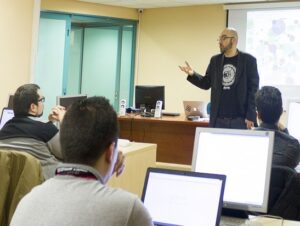The new world of retirement – an action plan for an ageing workforce
- 6 Min Read
Retirement is changing. The removal of the default retirement age, changes to the state pension age, freedom and choice retirement reforms, plus a shift to defined contribution pensions all mean that there is no longer a ‘one-size-fits-all’ model. By 2050, the Office for National Statistics anticipates that there will be 19 million people aged 65+ […]
- Author: HRD Connect
- Date published: Sep 26, 2017
- Categories

Retirement is changing. The removal of the default retirement age, changes to the state pension age, freedom and choice retirement reforms, plus a shift to defined contribution pensions all mean that there is no longer a ‘one-size-fits-all’ model.
By 2050, the Office for National Statistics anticipates that there will be 19 million people aged 65+ in the UK. Many of them will choose or need to remain in work – and over 1 million are already doing so.
Employers too can see the benefits of employing older workers. According to the Department for Work and Pensions’ Fuller Working Lives* report, 87% of employers said that the specific skills of those aged over 50 were suitable for their business, and 76% said that experience was the main benefit of employing this age group.
Ensuring that older employees are given opportunities to retrain, develop existing skills, work more flexibly and prepare financially for retirement, are all now firmly on the HR agenda.
Good work matters
Rather than spending their later working years seeking out tasks that are undemanding, many employees want career development and the opportunity to learn new skills.
Changing business priorities and skills gaps in the UK workforce provide plenty of learning and development opportunities for older workers. However, according to a report from Business in the Community (BITC), Age in the Workplace**, only 11% of employees over the age of 60 receive work-related training per year, compared to around 30% of those under 50.
But with more than 10m jobs to be filled in the 10 years between 2012 and 2022 as baby boomers leave the workforce, older workers will need to fill some of those gaps. And getting the 2.9m people who are not in work aged between 50 and state pension age back into employment could be worth £88bn a year to the UK economy, according to Aon’s paper An ageing population – a threat or an opportunity for your business.
Good health matters
Aon’s May 2017 report, Wellbeing: Examining the correlation between employee health and financial wellbeing researched approaches to staff health in 19 countries across EMEA. It found that the top three organisational health and wellness issues were:
• Stress and mental health: 65%
• Employees’ physical health: 53%
• Unhealthy employee lifestyles: 49%
In the UK, 93% of respondents said that employers are responsible for influencing employee health and behaviour, and that responsibility becomes even more important for older workforces. The biggest reason why 50 to 65-year-olds leave employment is ill health.
Figures from Aon’s paper on the ageing workforce show that of the 1.7m people between 50 and state pension age who are not in work but would like to be, 1m are sick and a further 0,4m are not able to work due to caring responsibilities. Flexible working and job redesign can help employees with ongoing or chronic health conditions to remain active at work, as well as those with caring responsibilities.
A first step could be a clearer understanding of where the health and wellbeing gaps are in the organisation, particularly when it comes to an ageing workforce. Services such as Aon’s tailor-made healthcare and risk benefits packages can help to determine the effectiveness of your current offering, as well as identifying future needs as the workforce changes. ***
Good finances matter
The link between physical and mental health, and financial wellbeing is becoming clear. Research by the CIPD**** in January 2017, Financial Wellbeing: the Employee View, showed that 25% of UK workers have money worries that affect their performance at work. And it’s not just low-paid staff – according to the same report, 20% of those earning between £45,000 and £59,000 struggle at work due to financial pressures.
BITC found that 30% of those who work beyond the age of 65 do so because they can’t afford to retire. There are a number of factors that could account for this, such as the decline in defined benefit pensions that offer a guaranteed level of pension income in retirement. The move to defined contribution pensions, combined with ‘freedom and choice’ reforms affecting employees over 55, has put the onus on individuals to decide how to fund their retirement.
Employees now need much more support to plan financially for the long term. But that assistance shouldn’t just start at retirement. Helping employees in mid-career to understand their future prospects, and encouraging good financial wellbeing throughout individuals’ working lives means older staff remain at work because they want to, not because they have to.
Pension rule changes also mean that businesses may have to work harder to retain some of their more senior staff. Reductions in the Lifetime Allowance (LTA) – the maximum amount that an individual can save tax efficiently into a pension – have meant that some higher paid staff can no longer benefit from contributions. The ability to access pension savings from the age of 55 could mean senior employees start to consider earlier retirement, with the result that businesses lose some of their most senior and experienced staff. Finding ways to motivate and reward individuals affected in this way is yet another challenge facing UK HR directors.
Action plan
Retaining the skills and experience of older workers can bring real benefits to UK businesses, if they make the right opportunities available to a changing workforce. Here are just six ways to start:
1. Analyse data from your pension scheme to understand the retirement scenarios that your workers may be facing. Use this to help to build relevant communications and support.
2. Consider financial wellbeing alongside other health strategies. Better financial wellbeing gives employees control over their finances, and means employers have a more productive workforce.
3. Understand the profile of your workforce and assess the impact that an ageing workforce could have in future. This can drive changes to job design for older workers, as well as ensuring career opportunities exist for younger employees.
4. Carry out an assessment of your current health and risk benefits, plus related factors such as absence patterns, to identify ways in which you can evolve your current strategy to take account of an ageing workforce.
5. Provide financial support for higher paid workers. Helping employees to understand the LTA, organising pension contributions accordingly, and providing options for those that reach the limit, can help to make sure they remain motivated and stay in work.
6. Explore options for flexible working, retraining and other adjustments that maximise the potential of older workers.
Aon’s suite of DC pensions and analytics tools can help you to build and execute an action plan, by better understanding how age demographics are affecting your workforce and identifying how best to support individuals as they work towards retirement on their own terms.
To find out more contact [email protected] or visit aonhewitt.com/dcpensions








